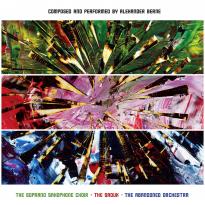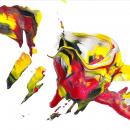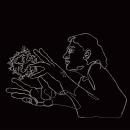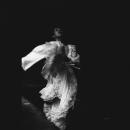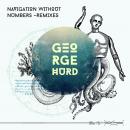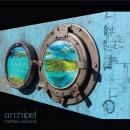Composed and Performed by Alexander Berne
Composed and Performed by Alexander Berne
Bradenton, FL
I spent the better part of the last two decades of my musical life in a rather Sisyphean struggle, practicing and only occasionally performing my own improvisatory sound creations, for the saxophone alone. I worked on an extended (non-circular) breathing technique, an original fingering method that generated polyphonic musical passages on what is usually a monophonic instrument, and a nearly unprecedented rapidity of note making without the usual loss of articulation, individual note clarity, and sonic purity.
As part of this process, I discovered, as many wind instrumentalists no doubt have before me, that specific postures and breathing disciplines were technically connected with teachings that lead towards the achievement of a focused mind, or meditation. I found that with the hyper speed I was attempting, as I coaxed one musical line to split into multiples, if I focused clearly and mentally traced the several lines, I could occasionally achieve a form of concentration resulting in a peaceful, elevated feeling.
A fair analogy might be the optical illusion of watching a fast spinning wheel seem to slow and then move in the opposite direction. This was all well and good, but the resulting ‘sound art’ often felt incomplete; it was beyond my grasp to consistently achieve or translate what I was attempting with a single monophonic instrument.
In this current innova 3-CD set I have explored my increasing fascination with the craft of multi-track studio recording techniques to more fully convey (compositionally) on multiple instruments what I previously attempted (improvisationally) solo. The studio has allowed me to more clearly delineate those individual voices and develop a more cohesive yet still fractal polyphony. I hope the essence of the art (musical and spiritual) is not dispersed by studio technology (I am not sure about this...it well might be).
The genesis of the first CD “The Soprano Saxophone Choir” came years ago as an exercise to improve my tone. I found that by creating (in studio) an accompaniment of various layered tones and phrases, in different registers and with different timbres, I could awaken hidden qualities in my sound. Vibrations are powerful, and we sometimes forget that there are actual physical changes taking place in the instrument which have corresponding aesthetic effects on the practitioner and hopefully the listener as well. There seems to be a special, even mystical quality when an instrument or voice is multiplied by itself…a choir. This first CD is an exploration of that choir phenomenon: many soprano saxophones living together, magnifying the ‘overtonal’, textural, harmonic, vibratory, ‘soundistic’ experience.
CD two, “The Saduk” - What do nearly all instrumental virtuoso do? Running headlong into limitations, they make significant changes to their instruments or in some cases make a new one entirely. I love the saxophone deeply, but it has some inherent constraints. It is a ‘heavy’ instrument, laden down with many large keys; you need a lot of breath to vibrate its elongated conical metal tube. Often longing for a more tender palette of expression than the saxophone would allow, – I developed flute envy. My solution was to create the saduk, the simple open-holed flute/reed hybrid featured on these tracks. Inspired in equal measure by an inner sound – one that I have ‘felt’ as much as ‘heard’ throughout my life – and the primal, tender wind instruments found in most world traditions, this recording marries a prenatally familiar wind expression with voice, percussion, saxophone and other acoustic sounds.
For the third CD, “The Abandoned Orchestra”, I did not throw in everything but the kitchen sink; I did, however, use enough plumbing materials – making new wind instruments – to fix that sink quite a few times over. Along with the saxophone and saduk I created the sadukini (a conically functioning saduk, similar to ‘world oboes’ like the nadaswaram, shenai, or zurna), the tridoulaphone (another flute/reed hybrid heard here in soprano, alto, and tenor registers), and a reeded slide trumpet.
“The Abandoned Orchestra” continues with my solitary, unassisted practice of composing, performing and recording. I have been contemplating the two senses of abandonment: to be abandoned is to be either forsaken or unrestrained – but isolation and desertion may lead to autonomy and liberty. In this self-layered orchestra, I have explored my own diverse pre- and post-ethnic sound world... -Alexander Berne, 2010
His pristine tone and seemingly limitless technique serve consistently to transport the listener to a higher realm of consciousness.
-Ben Monder
From the sensuous arc of that first endless phrase to the rotating figures that weave in and out like strings of pinwheels and atomic formations suspended in a world of dark beauty and scintillating lights... An otherworldly eternal call, stories of devotion and love...flocks of birds, flocks of people, praises and lamentations, ghostly voices of ancestors… A universal and timeless choir of mankind… Cavernous Tibetan temples, intense ritualistic practices… rapturous harmony embracing all elements past… invites you for a breathless swim in Alexander Berne’s cosmic ocean of sound.
- A Listener
He is one of the truly unique voices of his generation. Combining a deeply embedded lyricism with a spiritual sensibility and a superlative technique, Alexander Berne has arrived at a musical style that is utterly sui generis. His musical excursions, characterized by wave upon floating wave of sound, defy easy comparison, bearing more in common with abstract painters such as Rothko and Pollack than with other musical forms…His intricately embroidered tones, ethnically-flavored melodies and polyphonic cascades of notes combine to form a sound-world both meditative and charged, both striving and serene…Alexander Berne is a musician for the global village of our time, as he is a musician for all time. A master of his craft…and a forward-thinking visionary dedicated to the pursuit of a truly individual sound, he is a breath of fresh air in a cultural moment where integrity has lost its value, a moment where market success is prized far above the quest for musical and spiritual truth.
- Composer Patrick Zimmerli
Alex's music can be intense, hypnotic and driving, at other times meditative, reflective and deeply restful. Whatever you are feeling, you will find some of it in Alex's music.
- Bart Feller, Principal Flute, NYC Opera and NJSO
Alexander Berne's ambitious three-disc opus impresses ... for presenting polyphonic musical content that's so ravishing. His is truly a world music in that there's a primal and unadulterated quality to the material that would enable it to speak directly to any listener, regardless of ethnicity or geographic locale. Berne's that rare artist who can integrate lyricism, spirituality, and prodigious technical command into a single package, and his intricately woven lamentations constitute a potent sound-world that's regrettably too seldom encountered.
-Textura
Berne's ambient solo atmospherics reach oceanic, continental, and yeah, cosmic reaches in this 3-CD set, the culmination of years of nuanced, dreamy studio labors. "Shores" [is] open ocean all the way, with nothing in view but Berne's deep-breathing, contemplative soprano. Each tone approaches, becomes the center of attention, and recedes to a distant vanishing point. It's a pelagic world with no edges, troubled only by fugitive ripples and currents, but that's not to say the trip is monotonous. Relax in the diving bell and a variety of life forms, voices and overtones drift by, wiggling their fins, whipping their tentacles or flashing with bioluminescence until they vanish into the glimmer. [On The Saduk,] choral and organ-like echoes bring out the saduk's prayerful sound. Here, the rising and falling tones suggest the slow release of ancient folk melodies, long compressed under the strata of centuries … The Abandoned Orchestra has a denser event horizon, with articulated beats and an overlay of aural glyphs that jump from the underlying watercolor wash, hinting of Arab bazaars, catacombs, sandstorms and circuits. If they're still making "east meets west" CDs 500 years from now, these are the sounds they will probably emit. I longed to listen to them while sipping the spiced neutron nectar we'll doubtless be living on by then, but for now, a cigar and a glass of Drambuie sufficed.
-Larry Cosentino, Signal to Noise
